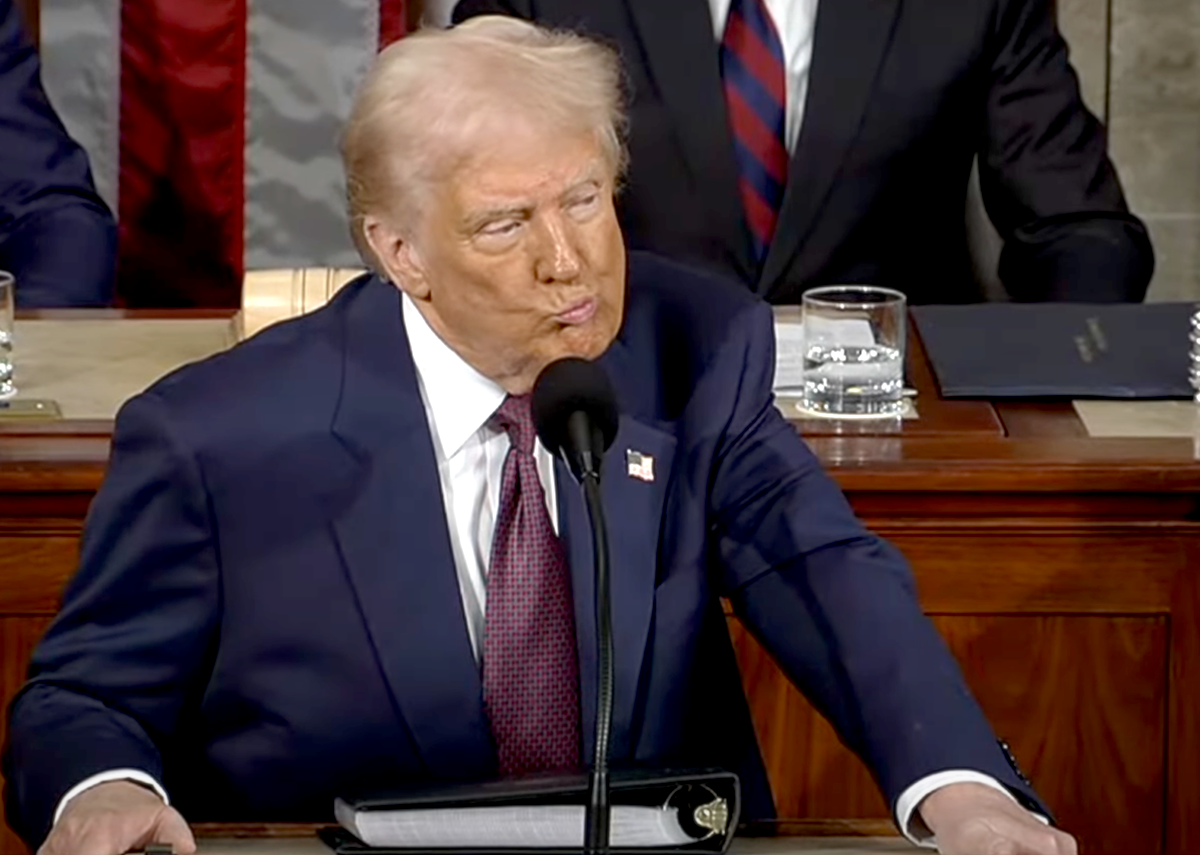Why Hope And Realism Offer A Better Path Forward Than Giving Up On America
When presenting one’s views on big topics such as politics or economics, it’s always important to maintain a fine balance between idealism and realism. Too much idealism will cause a person to resort to abstractions, deprive him of workable points of action, and lead him into predicting implausible utopias or dystopias. On the other hand, too much realism will lead a person to sink into the weeds of policies and practices, offer practical but marginally effective solutions, and conclude that nothing much will change anyway.
If one maintains the balance, however, it’s possible to describe a situation fairly yet offer workable solutions while also inspiring an audience with the bigger picture. This virtue is on full display in Chris Buskirk’s recent book “America and the Art of the Possible: Restoring National Vitality in an Age of Decay.”
Although he’s a conservative writing about the future political and economic prospects of the United States, Buskirk resists the urge to rant about today’s dysfunctions and predict doom and gloom. He also doesn’t fall into the bad habit of spouting nostalgic platitudes of Americans returning to the land, internalizing the wisdom of America’s founding documents, and having bigger families.
Rather, in a surprisingly nonpartisan fashion, he recognizes the problems afflicting Americans today, places them in the proper context, and proposes concrete solutions to bring about an American Renaissance.
Lost Vitality
Before moving into his solutions, Buskirk takes time to discuss the problems. As he explains in the introduction and first chapter, these go deep. In a variety of ways, America is losing its vitality: Americans’ health is declining; income disparity is increasing; economic mobility is decreasing; productivity is slowing; inflation continues to rise; and debt has exploded. These problems effectively lay the groundwork for a dark future: “Low growth and low mobility tend to increase political instability when the legitimacy of the political order is predicated upon opportunity and egalitarianism.”
To make matters worse, Americans are overwhelmed by the “hyperreality” that has emerged from ubiquitous and intrusive digital media, and they are less religious, both of which have led to more social friction and atomization. Buskirk asserts that these two issues, though bad, would be manageable were they not coupled with a stagnant economy: “America has uniquely relied on the growth and material abundance as a basis for our national identity and social cohesion, and as a measure of civilizational success.” When the boost of a strong economy and shared prosperity isn’t there, the challenges of a pluralistic democracy will eventually overwhelm social cohesion.
Added to the mix is the collapse of institutions. Buskirk mainly aims his criticisms at commercial institutions. Recounting the stories of spectacular failures such as Enron, Theranos, WeWork, and the Fyre Festival, he points out how the financialization of the economy has led to innumerable instances of mass fraud and unaccountability: “In a sense, [American elites] are playing a game, not creating value, nor promoting the creation of value; just scrambling for paydays based on nothing more than their position.” This clashes with the popular capitalist narrative that today’s billionaires are titans of industry, lifting the world’s masses out of squalor and despair.
Of course, no analysis of decline would be complete without mentioning higher education, which has gone astray in its mission to prepare America’s best and brightest to go and contribute to their world. Instead of explaining “what it means to be a valuable, fully integrated part of the society” and providing “a framework in which people can live productive, dignified lives,” these schools are fixated on “being the vanguard of a never-ending revolution that is constantly remaking the culture.” The effects of this are well documented in the case of the humanities, but they have also led to the decline of the sciences, which is less “a joyful voyage of discovery and more bland, paper-pushing careerism,” where success is measured by ephemeral “breakthroughs” based on dubious studies where the results can’t be replicated.
As a consequence of an economic system running largely on lies, media outlets that regularly gaslight their audiences, and corrupted educational organizations, Americans have increasingly found themselves stuck in a country that will not reward their hard work or respect their values. Buskirk reviews depressing trends and statistics that show the middle class struggling with stagnating wages as the super-rich become unfathomably richer.
Moreover, various sectors of the economy are being monopolized by massive corporations, limiting opportunities for workers to have any kind of leverage with their employers. On top of all this, there is a big push from both political parties for more globalization, further diminishing the financial independence of the average American. As Buskirk puts it, these changes have led to the middle classes becoming “increasingly proletarianized.”
Although the parties have switched their key constituencies, with Republicans now championing the working classes and Democrats aligning with elite interests, there seems to be relatively little political will in changing the course of the country. This puts into doubt a world order predicated on American hegemony.
As rivals such as China and other “civilization states” (countries and political unions that are unified in shared cultural values) continue expanding, the U.S. will need to respond by making common cause with allied nations: “The best future would be one in which America leads a bloc supporting national sovereignty and cooperation between a diverse group of civilization-states, and smaller powers that wish to maintain their particular traditions, cultures, and institutions against the homogenizing forces of globalism.” This runs directly contrary to the blithe cosmopolitanism that currently predominates in American foreign policy.
While interesting and quite readable, it’s fair to say there’s nothing particularly new about Buskirk’s analysis up to this point. Many populist critics on both the right and left have made the same observations — Trump’s recent speech at CPAC is a great example. For his part, Buskirk competently summarizes many of their conclusions, provides updated evidence, and frames them as a launching pad for what he does bring to the conversation: actual solutions.
Concrete Action
The final two chapters of the book finally go into what Buskirk has in mind for revitalizing a moribund America. First, Buskirk recommends fostering a culture of innovation. Looking at previous eras of creativity of technological innovation, he finds three common features: Authorities allowed small groups of creators to realize their ideas, they welcomed nonconformity since they were secured in a strong community, and they generally supported individuals and their ideas.
All of this flies in the face of today’s American authorities who seek to obliterate attempts to set oneself apart, have conversations with peers, or disrupt the consensus held by the elite. Buskirk thus recommends reforming K-12 schools and universities so free thinkers are not punished and aspiring inventors have an education that serves their needs.
After this, he offers some ideas for “big projects” that could rekindle the American economic system. This is easily the best chapter of the book and could have benefited from a longer treatment since each idea deserves a book in itself.
He presents six possible ideas in which to invest: geothermal power and environmentally sustainable batteries; extending the average human lifespan to 100; revising the education system with more vocational tracks and online alternatives; decentralizing finance and the internet in general through blockchain technology; building new cities and experimenting with different local governing models (something Donald Trump has also mentioned); and terraforming the land (particularly land devastated by commercial agriculture).
Buskirk demonstrates more than a passing knowledge of each of these ideas and could easily elaborate on the details. Unfortunately, he only devotes a few pages to each idea and calls it a day. Perhaps the assumption is that someone will follow his cue and put a plan into action. As for the rest of his readers, they will just have to rethink their career choices and recalibrate their skillset for a brighter future.
Overall, Buskirk delivers a concise overview of America’s problems and offers some plausible solutions. True to his background as an entrepreneur, he is less interested in exploring different political theories and more concerned with concrete action.
That said, as a seasoned writer and editor, he is still an intellectual in his own right, showing more imagination, depth of knowledge, and verbal fluency than most economists, business leaders, or financial experts. Most importantly, he has a great love for his country and seeks to move beyond petty political differences and short-term thinking. Even if Buskirk cuts himself somewhat short in “America and the Art of the Possible,” his argument proves he hasn’t given up on America, and neither should anyone else.
" Conservative News Daily does not always share or support the views and opinions expressed here; they are just those of the writer."





Now loading...